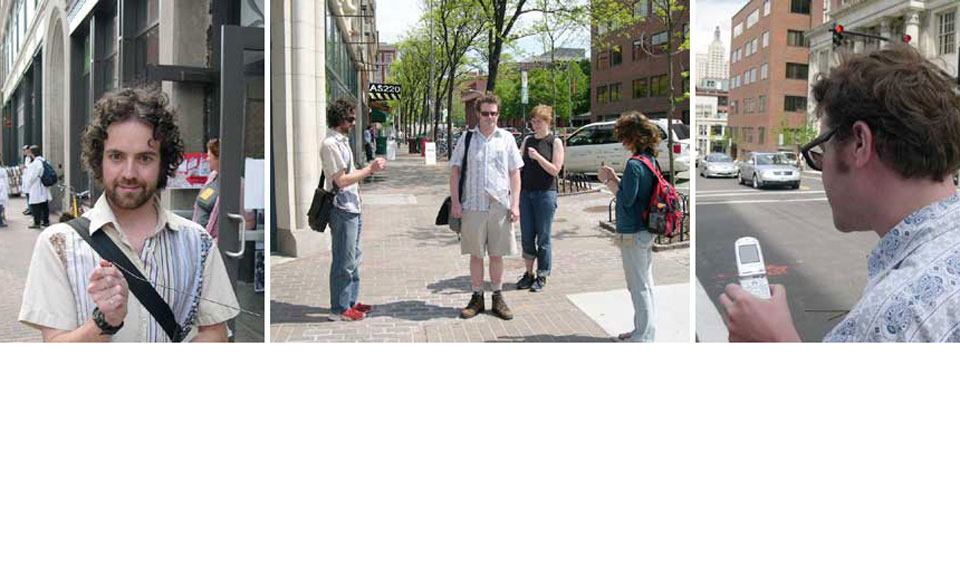Rethinking Locative Media
(2004)
Locative media is a fairly new term in the domain of geographic information systems that implies the use of portable, networked, location-aware computing devices as social interfaces to place and location. The alternative use of these technologies to explore location as a geographic canvas detournes their conventional functionality and questions the dominant models of geographic representation and their reductive effects. For the Provflux 2005 festival,
I joined forces with Sarah Lewison (www.carbonfarm.us) to propose an experimental field expedition that explores the collaborative process of divine cartography.
Divine cartography merges the ancient art of divination or dowsing with global positioning systems as a way to investigate the relationships in/between/beyond/around the terrestrial landscape. The process approaches datamining of both body and place through esoteric and empirical methodologies and forces the user to reevaluate the way one represents, relates to and moves about in their environment.
During the Provflux festival, participants in the Locative Media workshop became field expeditioners. As field expeditioners, participants were encouraged to conduct research, compiling “data” and collecting specimens and artifacts as they traversed the un/known landscape. Each expeditioner made their own locative media devices – divining rods – from old wire coat hangers and drinking straws. Expeditioners then mobilized into two groups and relocated to an undisclosed location simulating a feeling of being dislocated or place-less. Using only camera phones and their divining rods, expeditioners embarked on a journey to locate the other “missing” group. Images of the surrounding environment taken with camera phones were exchanged between groups throughout the expedition. The divining rods served as a way to “excavate” the images received. Using the divining rods, inquiries about the images with regards to sight lines, cardinal points, latitudes and history were conducted.
As an experimental field expedition, the outcome was unknown. Would the two groups ultimately converge? How would their data compare? What new forms of learning and/or sensory fusions would be required in order to utilize new technologies with the divining rod technology? How had perception of a familiar landscape been altered and what new information had emerged? Stay tuned. Answers to these questions and other anecdotal data will be posted shortly on this web page.
Provflux 2005
http://www.pipsworks.com/contact/provflux.html
